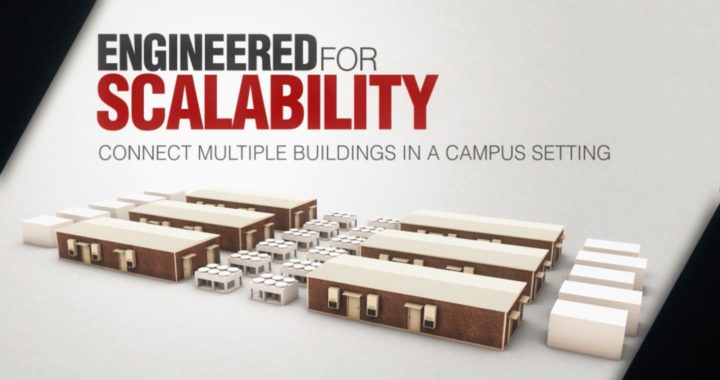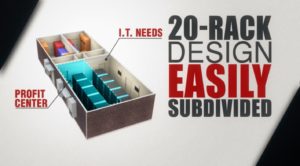The rapid growth of IoT has placed real-time demands on enterprises with centralized data centers. It is expected there will be 34 billion devices connected to the internet by 2020, up from 10 billion in 2015, representing a 28% five-year compound annual growth rate (Business Insider and BI Intelligence). In the near future, employing edge computing may no longer be a cost-saving option but likely required to meet customer demands given traditional computing devices (e.g. smartphones, tablets, smartwatches, etc.) will comprise 10 billion connections.
The implementation of local, real-time collection and analysis of critical data close to the edge has changed the data center landscape with the growth of edge computing. And, edge computing has advantages.
Edge computing provides reduced security risks, removes bandwidth and latency issues while lowering overall operational and data management costs. One preferred solution is to deploy Modular Data Centers (MDC) specifically built for edge computing networks; simplify procurement, installation, operational efficiency, and reduce costs.
Modular Data Centers now include redundancy, racks with increased processing power (15 kW/rack), built-in, high performance cooling systems, controlled access, and energy efficient, high-strength light-weight concrete enclosures.
What do you look for in Modular Data Centers?
When considering a Modular Data Center, evaluate your your current and future data capacity needs. Determine if the solution lowers your total cost of ownership (TOC). Is it:
- Rugged - ideal for remote ops, edge networks, disaster recovery, and does the MDC outperform in harsh environments (not a glorified ISO container)?
- Advanced Engineering: inside and out, is it designed to maximize uptime for data centers deployed at the edge?
- Best-In-Class: does it include advanced power systems, cooling, efficiency, and enhanced structural stability?
- Quick to Deploy: will it take less time to design, acquire and deploy?
- Scalabe - is it an optimized data center product for edge networks that is repeatable and standardized?
- Lower Cost - will it eliminate wasted capital and operational expenses (Capex, Opex), rightsize growth and avoid the costs of overbuilding?
- Replace - older and inefficient data center infrastructure equipment and reduce your costs?
- Reduce - your onsite construction disturbances, risks and associated costs?
Contact EdgeMCS for more information pertaining to advanced Modular Data Centers specifically buit for edge computing.







 The race is on to capitalize on the predicted multi -trillion dollar market investment in the Internet of Things (IoT) technology. Many companies are already seeing the positive business impact of IoT devices in the form of valuable data collected used to track customer behavior and inventory in real time. Additionally, reduction in operating costs associated with efficient usage of connected devices to allow employees the flexibility to work remotely is also an asset to the enterprise. The opportunities are plentiful for IoT to have a significant impact on our global economy, but the security challenges of increased vulnerabilities associated with all things “smart” will need to be addressed.
The race is on to capitalize on the predicted multi -trillion dollar market investment in the Internet of Things (IoT) technology. Many companies are already seeing the positive business impact of IoT devices in the form of valuable data collected used to track customer behavior and inventory in real time. Additionally, reduction in operating costs associated with efficient usage of connected devices to allow employees the flexibility to work remotely is also an asset to the enterprise. The opportunities are plentiful for IoT to have a significant impact on our global economy, but the security challenges of increased vulnerabilities associated with all things “smart” will need to be addressed.
 Due to the explosive growth, vulnerability, and availability of IoT devices, there are security concerns around edge computing even though some experts world argue security is better because data is staying closer to the edge and not traveling as much over the network. In addition to that, the term fog computing in relation to edge computing which includes network connections between the cloud and edge devices is coming into play. All this information can be confusing when trying to digest what it all means for your network architecture.
Due to the explosive growth, vulnerability, and availability of IoT devices, there are security concerns around edge computing even though some experts world argue security is better because data is staying closer to the edge and not traveling as much over the network. In addition to that, the term fog computing in relation to edge computing which includes network connections between the cloud and edge devices is coming into play. All this information can be confusing when trying to digest what it all means for your network architecture.